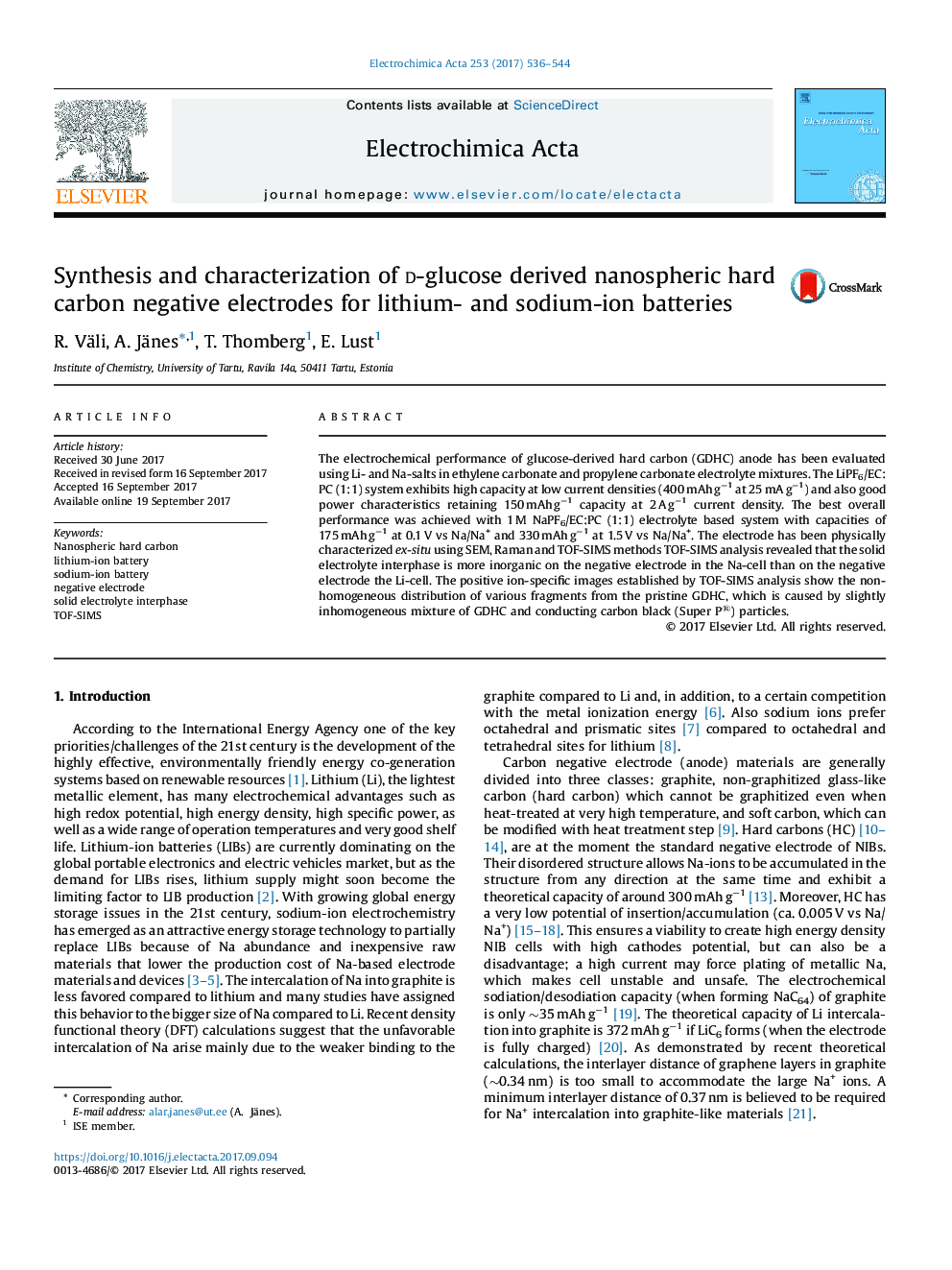| کد مقاله | کد نشریه | سال انتشار | مقاله انگلیسی | نسخه تمام متن |
|---|---|---|---|---|
| 6470190 | 1424104 | 2017 | 9 صفحه PDF | دانلود رایگان |

- d-glucose-derived hard carbon material was synthesized using HTC method.
- TOF-SIMS analysis shows that the SEI is more inorganic on the anode from NIB half-cell.
- 1 M LiPF6/EC:PC (1:1) showed capacity of 400 mAh gâ1 in LIB half-cell.
- 1 M NaPF6/EC:PC (1:1) system capacity under 0.1 V vs Na/Na+ is 175 mAh gâ1.
The electrochemical performance of glucose-derived hard carbon (GDHC) anode has been evaluated using Li- and Na-salts in ethylene carbonate and propylene carbonate electrolyte mixtures. The LiPF6/EC:PC (1:1) system exhibits high capacity at low current densities (400 mAh gâ1 at 25 mA gâ1) and also good power characteristics retaining 150 mAh gâ1 capacity at 2 A gâ1 current density. The best overall performance was achieved with 1 M NaPF6/EC:PC (1:1) electrolyte based system with capacities of 175 mAh gâ1 at 0.1 V vs Na/Na+ and 330 mAh gâ1 at 1.5 V vs Na/Na+. The electrode has been physically characterized ex-situ using SEM, Raman and TOF-SIMS methods TOF-SIMS analysis revealed that the solid electrolyte interphase is more inorganic on the negative electrode in the Na-cell than on the negative electrode the Li-cell. The positive ion-specific images established by TOF-SIMS analysis show the non-homogeneous distribution of various fragments from the pristine GDHC, which is caused by slightly inhomogeneous mixture of GDHC and conducting carbon black (Super P®) particles.
285
Journal: Electrochimica Acta - Volume 253, 1 November 2017, Pages 536-544